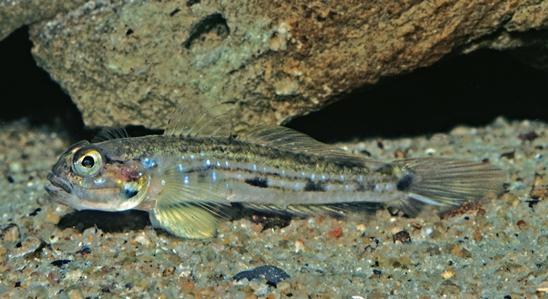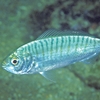General Description
Body slender, head compressed, oval in cross-section; interorbital width less than eye diameter; mouth terminal, reaching to below front part of eye; gill opening restricted to pectoral-fin base; tongue tip truncate to slightly emarginate; head scaled forward to above the gill cover. Overall greenish-brown above, pale below, with fine dark longitudinal stripes and 5 dark rectangular blotches along lower side and pale bluish spots above; dark mark below middle of gill cover and a long thin mark on lower surface of head. To 12 cm.
Biology
This species is native to waters in Japan, Korea and China. It was accidentally introduced to Australia and New Zealand when juveniles or larvae were transported in ballast water in ships and the water was released in ports of call. Ships heading to Australia must now release their ballast water far offshore. Following its initial discovery in Port Melbourne, Port Phillip Bay in 1997, the species was subsequently found to be widespread in the highly disturbed silty areas, including Port Melbourne and Corio Bay. Although still present, populations appear to fluctuate.
Habitat
Sandy and silty areas in sheltered bays, harbours and estuaries, to depth of 15 m.
Soft substrates
Distribution guide
Japan, Korea and China. In Australia, recorded from New South Wales and Port Phillip (Victoria).
Species Group
Depth
Water Column
Max Size
12 cm
Commercial Species
No
Global Dispersal
Introduced to Australia
Identify
Conservation Status
- DSE Advisory List : Not listed
- EPBC Act 1999 : Not listed
- IUCN Red List : Not listed





